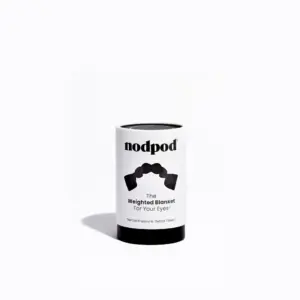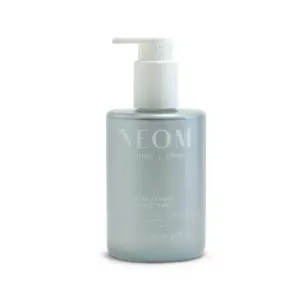Boring Mattress Co. vs. Nectar Mattress: In-Depth Comparison
Boring Mattress Co. and Nectar both sell bed-in-a-box mattresses, but they differ in feel, construction, and value. Below is a detailed comparison across key factors—price, comfort, durability, and more.
Price Comparison
Hybrid from $499 (Twin) to $849 (Cal King). Queen around $699. Also offers an all-foam model at similar prices.
Verdict: Delivers premium hybrid comfort at a budget-friendly price.
Classic Memory Foam from $595 to $1,095. Queen typically $899–$999 with frequent promos and bundles.
Comfort & Support
Medium-firm (6.5/10) hybrid feel balances support and ease of movement—ideal for back, stomach, and combination sleepers. Sleeps cooler with reinforced edges.
Medium-firm memory foam (6.5/10) with deep contouring for side sleepers. Excellent motion isolation but less airflow and edge strength.
Durability
Hybrid coils and high-density foam resist sagging for 8–10 years of reliable support. Reinforced edges hold shape longer.
All-foam build may form body impressions over time; lifespan around 7–8 years.
Materials & Construction
Hybrid combines breathable foam comfort layers with pocketed coils for support and airflow. Fiberglass-free and designed for cooler sleep.
Gel-infused memory foam over dense base foam. Older models contained fiberglass; newer versions claim to be fiberglass-free.
Customer Reviews & Satisfaction
High satisfaction for comfort, value, and responsive customer service. Simple and transparent buying experience.
Large customer base, but mixed feedback on long-term durability and warranty claims.
Warranty & Trial
365-night trial and 10-year warranty—strong coverage for the price.
365-night trial and Lifetime Warranty covering defects beyond 10 years.
Mattress Types
Final Verdict
Boring Mattress Co. wins overall for price, support, cooling, and simplicity. It’s ideal for sleepers who want a balanced, durable hybrid without paying a premium.
Nectar remains a solid choice for those who love a deep memory-foam hug and extra motion isolation, but at a higher cost.
My Experience Sleeping on Both Mattresses
I’ve tested a lot of mattresses over the years—some forgettable, some genuinely impressive—but few felt as directly comparable as the Boring Mattress Co. Hybrid and the Nectar Classic Memory Foam. Both arrived in compact boxes within a few days. Setup was easy, though Boring’s packaging was simpler and cleaner—no heavy plastic layers or chemical odor. The mattress took shape quickly and looked ready to sleep on within an hour, while the Nectar needed almost a full evening to expand fully.
When I first lay down on the Nectar, I understood why people love it. There’s a slow, melting comfort as the memory foam absorbs your shape. My shoulders and hips immediately felt cushioned, like being cradled in warm sand. It’s the kind of softness that makes you exhale. But by the third night, I noticed something else: movement became an effort. Every time I shifted or rolled over, it felt like climbing out of a small impression I’d made in the mattress. I started sleeping more on my back simply because turning took too much energy.
There’s a moment where comfort tips into containment—where you realize the mattress is holding you, not supporting you.
Heat became another issue. Nectar’s top layer is gel-infused, but the foam still holds warmth. By two or three in the morning, I’d feel the heat pooled under me. Not unbearable, but noticeable. I started keeping one leg outside the blanket just to balance it out. The tradeoff is that Nectar really does isolate motion—you can jump on one side and barely ripple the other. For couples, that’s a genuine win.
After two weeks, I switched to the Boring Hybrid. The difference was immediate. The surface felt steadier, more grounded. Instead of sinking, I floated slightly above the layers. The coils underneath gave it structure—a kind of quiet spring that responded instead of yielding. I could roll, stretch, or sit near the edge without that sinking feeling. It was an easier mattress to live with day to day, less dramatic but more balanced.
The first few mornings told me everything. My back didn’t ache, and my energy felt steadier. I checked my sleep data out of curiosity: average heart rate dropped a few beats, and I was spending more time in deep sleep. Maybe it wasn’t the mattress alone, but the trend was hard to ignore. The Boring slept noticeably cooler too; airflow through the coils kept the surface temperature even through the night.
I tested both for edge support by sitting and tying my shoes—something small but revealing. The Nectar compressed heavily at the edges, like a soft couch cushion, while the Boring stayed firm and level. That firmness also made it easier to get up in the morning; no half-sunk feeling that made me hesitate to stand.
The Boring Hybrid doesn’t demand attention—it just quietly does its job, night after night. That’s its real strength.
Durability’s harder to judge in a few weeks, but you can feel the difference in build. The Boring’s top foam layers spring back faster, and the stitching and border feel reinforced. Nectar’s cover is softer, almost plush, but I could already sense slight body impressions forming near the hips after two weeks. Not dramatic, but a hint of what might come later.
For comfort, it comes down to preference. Nectar is like a memory cocoon—excellent for pressure relief and stillness. The Boring Hybrid is more adaptive, like a good pair of running shoes: supportive, responsive, and ready to move when you are. If you sleep hot or switch positions often, the hybrid’s a better companion. If you’re mostly on your side and crave that sinking-in calm, Nectar’s your match.
For me, the decision felt clear. I kept the Boring Hybrid in my own room and moved the Nectar to the guest room, where it actually shines for shorter stays. I don’t think Nectar’s a bad mattress—it’s just tuned for a different kind of sleeper. But the Boring hits that rare middle point between comfort and practicality that most brands promise but few deliver.
Three months later, the hybrid still feels fresh. No dips, no sagging, no heat buildup. I don’t think about it much anymore, which says everything. The best sleep products disappear into your routine. They don’t need constant adjusting or special treatment—they just let you rest, and get out of the way.
So if I had to summarize: Nectar impressed me for the first few nights, but Boring earned my trust over the long run. The difference isn’t flash—it’s function. And that, for most of us, is what actually matters.













